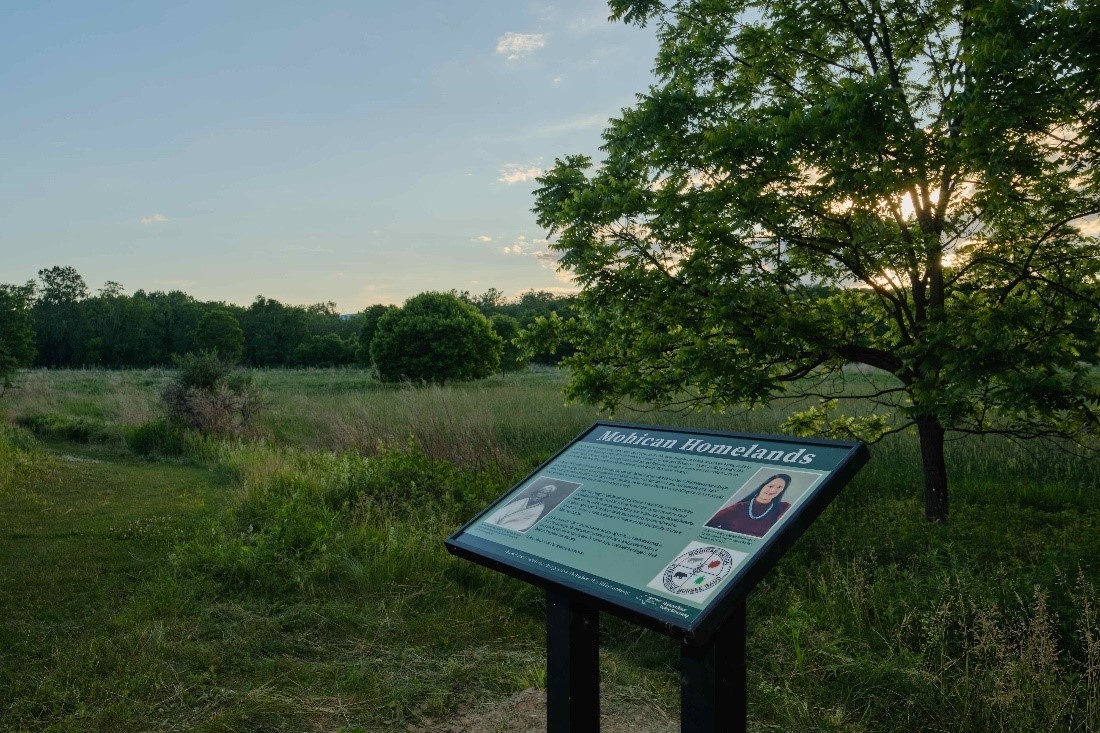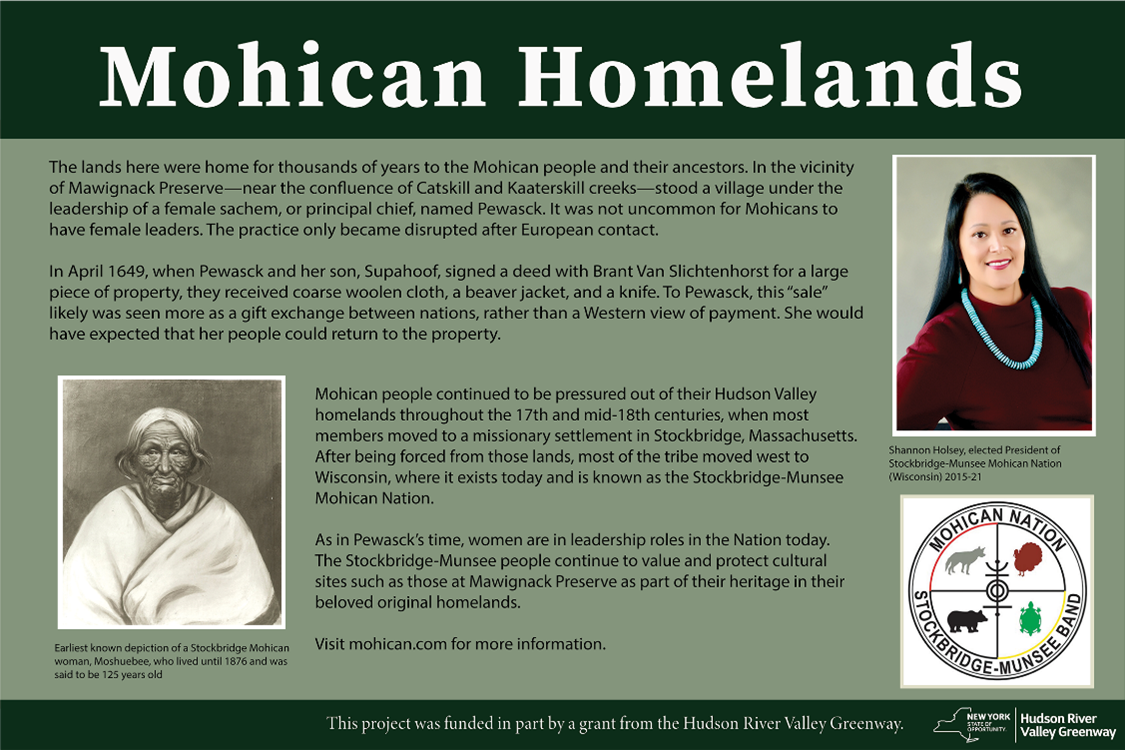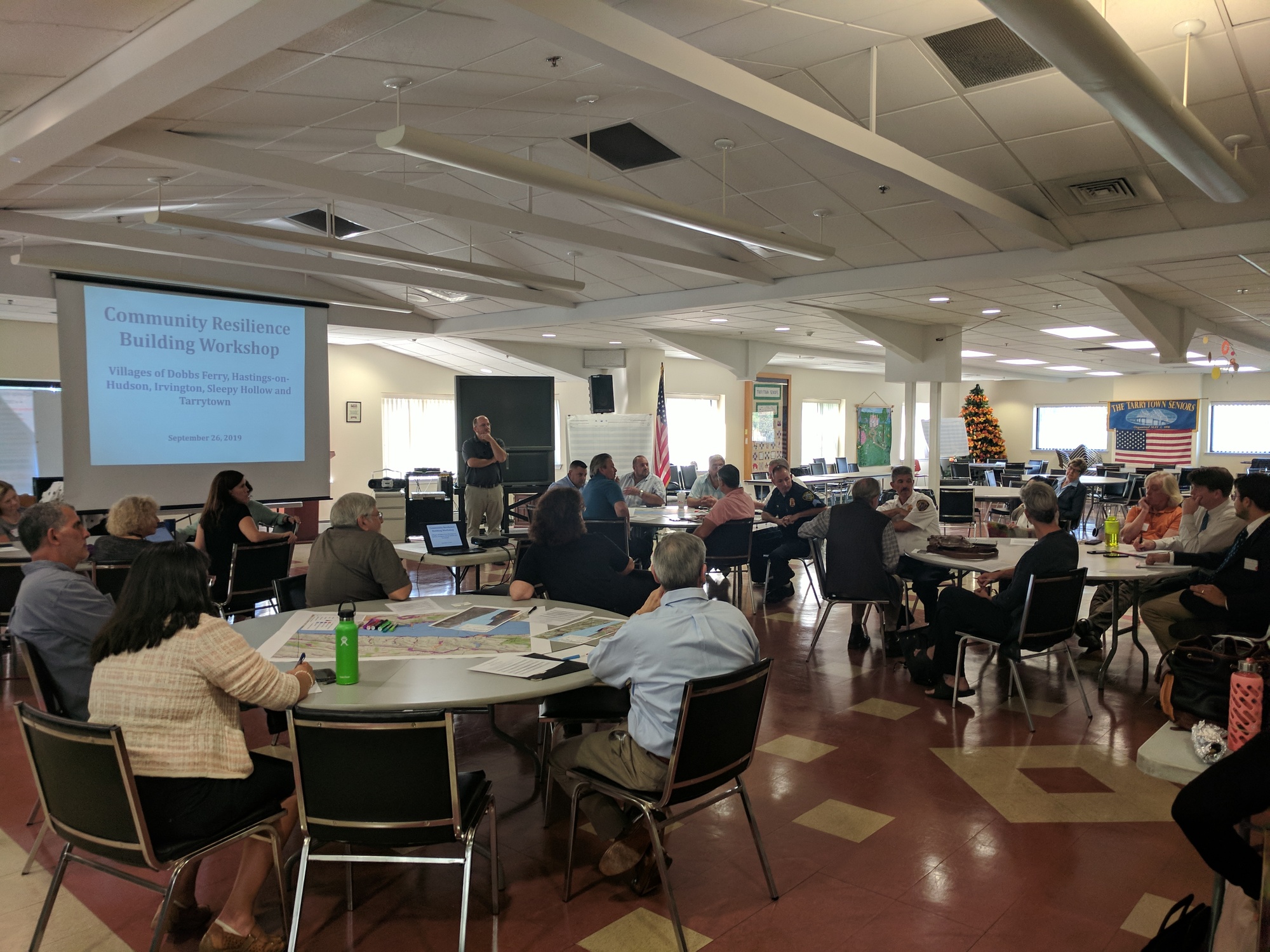Climate Adaptation News | Hudson River Estuary | December 2020
The New York State Department of Environmental Conservation sent this bulletin on 12/17/2020 10:01 AM EST |
| DEC Delivers - Information to keep you connected and informed from the NYS Department of Environmental Conservation |
| Share or view as a web page || Update preferences or unsubscribe |
Climate Adaptation in the Hudson River Estuary |
|
In This Issue:
Spotlight Story: A Collaborative Sign Project at Mawignack PreserveSigns at the newly opened preserve along the Catskill Creek offer visitors an inclusive perspective on the history of the land.
Mohican Homelands sign in the floodplain meadow Photo courtesy of Bonney Hartley First-time visitors to this park will take a short hike through the woods along recently constructed wooden boardwalks built by the Student Conservation Association (SCA) before arriving at the main attraction, a picturesque floodplain meadow. Sections of the meadow are being restored with native tree species that will increase the ability of this parcel to mitigate flooding for the downstream Village of Catskill.
SCA members construct boardwalks at Mawignack preserve Photo courtesy of Greene Land Trust These features, along with the network of creek-side trails, are maintained by the Greene Land Trust with their partner Scenic Hudson. However, there is more to this property than meets the eye. A collaborative sign project tells the story of original Mohican inhabitants, and how, during the period of European colonization, the land was taken and farmed using the labor of enslaved people by the Dutch. These signs engage the audience in an exercise of historical truth-telling often overlooked by similar projects. Estuary Program staff discussed the significance of this effort with a representative of the Stockbridge Munsee Mohican Nation, the modern descendants of the people who lived in the upper-Hudson Valley before they were forced to migrate westward during colonization. “Our community is often invisibilized and erased from the landscape, projects like this help to raise visibility” related Bonney Hartley, Historic Preservation Manager. In addition to acknowledging this history, the sign project provides a model for collaboration between conservation organizations and indigenous American nations. Representatives from Greene Land Trust reached out to the Mohican Nation to co-lead this work, and the signs themselves received the approval of the Nation’s tribal council. Through this partnership, the Nation was able to tell the history of this land in their own words, including the story of Pewasck, the female sachem who dwelt on this land at the time of colonization. The proud history of female leadership within the Mohican Nation becomes the theme of one sign within the park featuring a picture of the current president Shannon Holsey.
Image courtesy of Bonney Hartley Native land acknowledgment is a growing practice, and one that is essential for conservation organizations. But in using this practice, it is vital that such organizations provide space for indigenous American’s to tell the story themselves. Anyone can begin this process by learning who the original inhabitants in your area are. And for organizations considering engaging in a similar project, consider these best practices for working with indigenous American nations (courtesy of Bonney Hartley):
19 New and Updated Climate Adaptation and Resilience Actions Released for the NYS Climate Smart Communities Certification ProgramAiming to increase local government action on adaptation, the Estuary Program led a multi-agency effort to overhaul Pledge Element 7: “Enhance community resilience to climate change” of the Climate Smart Communities (CSC) certification program. The 19 Certification Actions just released include updates to eight actions already available in the certification program and the creation of 11 new actions including strategic relocation, green infrastructure, culverts & dams, and source water protection. These actions, which were drafted by a team of eight state agencies and offices and reviewed by local governments for “on-the-ground” perspective, will be available to communities beginning in the 2021 certification cycle. Full guidance for these new actions can be viewed on the Climate Smart website. The Estuary Program is pleased to support our NYS Climate Smart Communities program and continued climate leadership in the Hudson Valley region.
Community conducts vulnerability assessment Photo courtesy of Libby Zemaitis Summer 2020 was Unusually Hot and Dry According to the Mohonk Lake Weather StationThe Mohonk weather station provides 124-year averages by month and by season. Recent data shows Summer 2020 was 5.0°F above average, making this the 2nd warmest summer ever recorded. The month of July shattered all expectations. At 6.1°F above average, this was the warmest July ever recorded. In addition to the heat, rainfall was down 6.88 inches below average. Stay up-to-date on the latest weather summaries from Mohonk’s website. News Roundup
|






